Masterpiece and Sitter: Sargent and The Sitwells – Edith Sitwell
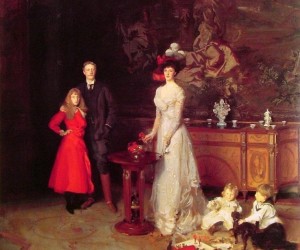
John Singer Sargent, The Sitwell Family, 1900. From left: Edith Sitwell (1887 - 1964), Sir George Sitwell, Lady Ida, Sacheverell Sitwell (1897-1988), and Osbert Sitwell (1892-1969).
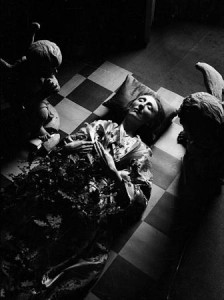
- Sitwell, Dame Edith
Edith Sitwell
Dame Edith Louisa Sitwell DBE (7 September 1887 – 9 December 1964) was a British poet and critic.
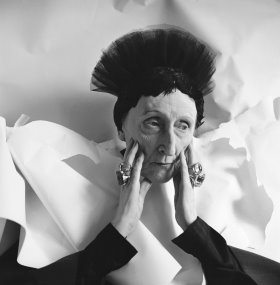
Sitwell, Dame Edith
Background
Edith Sitwell was born in Scarborough, Yorkshire, the only daughter of the eccentric Sir George Sitwell, 4th Baronet, of Renishaw Hall; he was an expert on genealogy and landscaping. Her mother was the former Lady Ida Emily Augusta Denison, a daughter of the Earl of Londesborough and a granddaughter of Henry Somerset, 7th Duke of Beaufort. She claimed a descent through female lines from thePlantagenets.
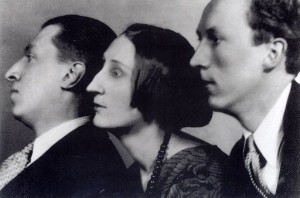
Sitwell, Dame Edith
Sitwell had two younger brothers, Osbert (1892-1969) and Sacheverell Sitwell (1897-1988) both distinguished authors, well-known literary figures in their own right, and long-term collaborators. Sacheverell married a Canadian woman, Georgia Doble, in 1925 and moved to Weston Hall in Northamptonshire.
Her relationship with her parents was stormy at best, not least because her father made her undertake a “cure” for her supposed spinal deformation—involving locking her into an iron frame. In her later autobiography, she said that her parents had always been strangers to her.
In 1912, 25-year-old Sitwell moved to a small, shabby fourth-floor flat in Pembridge Mansions, Bayswater, which she shared with Helen Rootham (1875-1938), her governess since 1903.
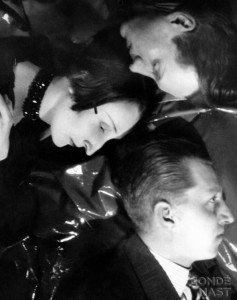
Sitwell, Dame Edith
Edith never married. However, it is claimed that in 1927 she fell in love with the homosexual Russian painter Pavel Tchelitchew. The relationship with Tchelitchew lasted until 1928; the same year when Helen Rootham underwent operations for cancer, eventually becoming an invalid. In 1932, Rootham and Sitwell moved to Paris, where they lived with Rootham’s younger sister, Evelyn Wiel. Rootham died of spinal cancer in 1938.
Sitwell’s mother died in 1937. Sitwell did not attend the funeral because of her displeasure with her parents during her childhood.
During World War II, Sitwell returned from France and retired to Renishaw with her brother Osbert and his lover, David Horner. She wrote under the light of oil lamps when the lights of England were out of service. She knitted clothes for their friends who served in the army. One of the beneficiaries was young Alec Guinness, who received a pair of seaboot stockings.
The poems she wrote during the war brought her back before a public. They include Street Songs (1942), The Song of the Cold (1945) and The Shadow of Cain (1947), all of which were much praised. Still Falls the Rain, about the London blitz, remains perhaps her best-known poem (it was set to music by Benjamin Britten as Canticle III: Still Falls the Rain).
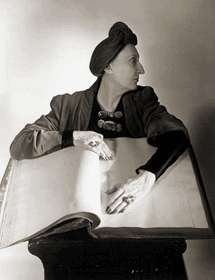
Sitwell, Dame Edith
Her poem The Bee-Keeper was set to music by Priaulx Rainier, as The Bee Oracles (1970), a setting for tenor, flute, oboe, violin, cello and harpsichord. It was premiered by Peter Pears in 1970.
In 1943, her father died in Switzerland, his wealth depleted. In 1948, a reunion with Tchelitchew, whom she had not seen since before the war, went badly.
In 1948 Sitwell toured the United States with her brothers, reciting her poetry and, notoriously, giving a reading of Lady Macbeth’s sleepwalking scene. Her poetry recitals were always occasions; she made recordings of her poems, including two recordings of Façade, the first with Constant Lambert as co-narrator, and the second with Peter Pears.
Tchelitchew died in April 1957. Her brother Osbert died in 1969, of Parkinson’s disease, diagnosed in 1950. Sitwell became a Dame Commander (DBE) in 1954. In August, 1955, Sitwell converted to Roman Catholicism and asked author Evelyn Waugh to serve as her godfather.
Sitwell wrote two books about Queen Elizabeth I of England, Fanfare for Elizabeth (1946) and The Queens and the Hive (1962). She always claimed that she wrote prose simply for money and both these books were extremely successful, as were her English Eccentrics (1933) and Victoria of England (1936).
Around 1957 she was confined to a wheelchair after battling with Marfan syndrome throughout her life. Her last poetry reading was in 1962. She died of cerebral haemorrhage at St. Thomas’s Hospital on 9 December 1964 at the age of 77.
Sitwell’s papers are held at the Harry Ransom Center at the University of Texas at Austin.
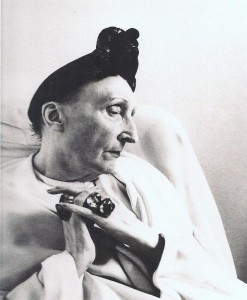
Sitwell, Dame Edith
Poetry
Sitwell published her first poem The Drowned Suns in the Daily Mirror in 1913 and, between 1916 and 1921, she edited Wheels, an annual poetic anthology compiled with her brothers—a literary collaboration generally called “the Sitwells”.
In 1929 she published Gold Coast Customs, a poem about the artificiality of human behaviour and the barbarism that lies beneath the surface. The poem was written in the rhythms of thetom-tom and of jazz, and shows considerable technical skill. Her early work reflects the strong influence of the French symbolists.
She became a proponent and supporter of innovative trends in English poetry and opposed what she considered the conventionality of many contemporary backward-looking poets. Her flat became a meeting place for young writers whom she wished to befriend and help: these later included Dylan Thomas and Denton Welch. She also helped to publish the poetry ofWilfred Owen after his death.
Her only novel, I Live under a Black Sun, based on the life of Jonathan Swift, was published in 1937.
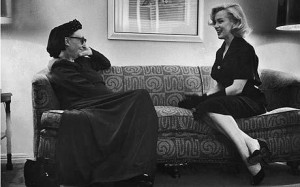
Sitwell, Dame Edith
Publicity and controversy
Sitwell had angular features resembling Queen Elizabeth I (they also shared the same birthday) and stood 6′ (183 cm) tall, but often dressed in an unusual manner with gowns of brocadeor velvet with gold turbans and a plethora of rings – her jewelry may be seen in the jewelry galleries of the Victoria and Albert Museum in London. Her unusual appearance provoked critics almost as much as her verse, and throughout her life she was the subject of more or less virulent personal attacks from Geoffrey Grigson, F. R. Leavis and others, which she returned with vigour. As she lay dying, the critic Julian Symons published the last of these attacks in The London Magazine of November 1964, accusing her of ‘wearing other people’s bleeding hearts on her own safe sleeve.’ Her ‘enemies’ were treated with scorn; after Noel Coward wrote a skit on Sitwell and her two brothers as “The Swiss Family Whittlebot” for his 1923 revueLondon Calling! she refused to speak to him until they were reconciled after her triumphant 70th birthday party at London’s Festival Hall. To her friends she showed great sweetness and invariable kindness.
Sitwell was most interested by the distinction between poetry and music, a matter explored in Façade (1922), which was set to music by William Walton, a series of abstract poems the rhythms of which counterfeited those of music. Façade was performed behind a curtain with a hole in the mouth of a painted face (the painting was by John Piper) and the words were recited through the hole with the aid of a Sengerphone. The public received the first performance with bemusement, but there were many positive reactions.
Source: en.wikipedia.org


This Post Has 1 Comment